This article was medically reviewed by Theodore Leng, MD. Dr. Leng is a board certified Ophthalmologist and Vitreoretinal Surgeon and an Assistant Professor of Ophthalmology at Stanford University. He completed his MD and Vitreoretinal Surgical Fellowship at Stanford University in 2010. Dr. Leng is a Fellow of the American Academy of Ophthalmology and the American College of Surgeons. He is also a member of the Association for Research in Vision and Ophthalmology, the Retina Society, the Macula Society, the Vit-Buckle Society, as well as the American Society of Retina Specialists. He received the Honor Award by the American Society of Retina Specialists in 2019.
There are 8 references cited in this article, which can be found at the bottom of the page.
wikiHow marks an article as reader-approved once it receives enough positive feedback. This article received 15 testimonials and 85% of readers who voted found it helpful, earning it our reader-approved status.
This article has been viewed 2,957,301 times.
We all know how important it is to keep our bodies fit by keeping active and maintaining a regular exercise routine. But, did you know that you can exercise your eyes as well? Eye exercises are designed to strengthen your eye muscles, improve focusing, eye movements, and stimulate the vision center of your brain. While there is no scientific proof that eye exercises will improve your eyesight, they may help to counteract existing eye problems you may have and maintain your current eyesight level.[1]
Steps
Preparing Your Eyes for Exercise
-
1Talk to your optometrist about eye exercises. There is no clear scientific data that shows eye exercises improve your eyesight. So before you attempt eye exercises, it's a good idea to get a professional eye exam done by your optometrist. Your optometrist can then tell you if you have any existing eye problems or issues. Before you try eye exercises, you should ask your optometrist if these exercises would benefit your particular set of eyes.[2]
- Keep in mind that eye exercises will not cure or solve eye issues like myopia (nearsightedness), presbyopia (an inability to change focus from far to near), or astigmatism (blurred vision due to the shape of your cornea).[3] Most optometrists are skeptical of eye exercises that claim they can help you "throw away your glasses."[4]
- There is no harm in trying these eye exercises if you do not have any eye conditions that will be aggravated by prolonged use of your eyes. But if you have serious eye conditions like cataracts, blindness in one or both eyes, or a recovering cornea injury, avoid doing these exercises.[5]
-
2Palm your eyes. Doing this will reduce stimuli to your eyes and brain. Closing your eyes and applying light pressure to them will spread the tear film in your eyes evenly and relax them.[6]
- Sit comfortably in a chair. Rub your hands together until they feel warm.
- Close your eyes and cover them lightly with your cupped palms. Avoid applying pressure to your eyeballs. Your nose should not be covered to ensure you have enough ventilation during the palming.
- Make sure no light can enter your eyes though gaps between your fingers or the edges of your palms and nose. The light will stimulate, rather than relax your eyes, and deter the process of relaxation. Imagine deep blackness and focus on it.
- Take deep breaths slowly and evenly while thinking of a calming scene, like an empty beach, a clear lake, or a still mountain. Once you see nothing but blackness, remove your palms from your eyes.
- Repeat the palming for three minutes or more.
Advertisement -
3Massage your eyes. This will help to improve blood circulation around your eyes and face, and prepare your eyes for exercise.[7]
- Apply a hot and cold compress: Soak a towel in warm water, and a towel in cold water. Place the warm towel on your face, making sure it drapes over your eyebrows, closed eyelids, and cheeks. After three minutes, remove the warm towel and place the cold towel on your face. Alternate between the two towels as desired, making sure to end with a cold compress. Alternating temperatures on your face will cause vasoconstriction and vasodilation, physiological changes that will stimulate your face and the skin around your eyes.
- Do a full face massage: Soak a towel in warm water. Rub your neck, forehead and cheeks with the towel. Then, use your fingertips to gently massage your forehead and closed eyes.
- Do an eyelid massage: Wash your hands well. Then, close your eyes and massage them with circular movements of your fingers for one to two minutes. Make sure you press very lightly on your eyes as you massage them. Light pressure will help to stimulate your eyes.
Exercising Your Eyes
-
1Strengthen your eyes’ near and far focusing. This exercise will strengthen the muscles in your eyes and help you maintain your current vision level.[8]
- Sit in a chair or stand in front of a blank wall. Place your thumb about 10 inches (25 cm) in front of your face and focus on it. You can also focus on an object that is five to 10 feet away for 10–15 seconds.
- Then, focus on an object that is 10–20 feet in front of you without moving your head. Focus on the object for 10–15 seconds.
- After 10–15 seconds, refocus on your thumb. Practice this five times.
-
2Practice zooming with your eyes. This is a good eye focusing exercise, as you have to constantly adjust how well you can focus on an object from certain distances.
- Sit in a comfortable position.
- Stretch out your arm with your thumb in the hitchhiking position (thumbs up).
- Focus on your thumb. Then, bring the thumb closer to you, focusing until your thumb is about 3 inches (8 cm) in front of your face.
- Move your thumb away again until your arm is fully outstretched.
- Repeat this exercise three more times, once a week.
- You can also practice this exercise by holding a pencil in front of you at arm’s length. Then, move your arm slowly to your nose. Follow the pencil with your eyes until you can’t focus on it any longer.
-
3Make a figure eight with your eyes. This is a great exercise to practice controlling the physical movement of your eyes.[9]
- Imagine a giant figure eight on the floor, about 10 feet (3 m) in front of you.
- Trace the figure eight with your eyes, slowly.
- Trace it one way for a few minutes and then trace it the other way for a few minutes.
-
4Practice rhythmic eye movements. These movements can help to strengthen your eyes and your hand-eye coordination.[10]
- Do bar swings. Bar swings help to test your brain's ability to focus on an object with your eyes and maintain your balance and coordination. Stand in front of a fence, barred window, or something else with evenly spaced vertical lines. Focus on a distant object on the other side of the bars. Relax your body and transfer your weight from one foot to the other. Keep your breathing steady and relaxed. Don't forget to blink while performing this exercise. Continue for two to three minutes.
- Do round swings. This exercise helps to strengthen your peripheral vision. Focus on an object in the distance that is close to the ground. Sway as instructed for Bar Swings. Keeping your gaze on the same object, use your peripheral vision to observe your surroundings as you sway. Continue for two to three minutes.
-
5Do directional eye exercises. Moving your eyes in different directions is a good way to exercise your eyes.[11]
- Stand or sit upright. Look straight ahead. Without moving your head, look to the left. Focus on what you see. Then look right. Move your eyes side to side five times. Repeat this three times.
- Without moving your head, look down. Focus on what you see. Then, look up. Focus on what you see. Repeat this three times.
- Without moving your head, look straight ahead. Then, look down and to the left. Focus on what you see. Then, move your eyes diagonally and look up and to the right. Focus on what you see. Repeat this exercise five times. Then, look straight ahead and do the same exercise looking down and to the right and then looking up and to the left. Repeat this cycle three times.
-
6
Exercises and Tips to Maintain Your Eyesight
Warnings
- If you are doing exercises and you get a headache or eye strain or blurry vision, stop and rest.⧼thumbs_response⧽
References
- ↑ http://www.webmd.com/eye-health/eye-exercises
- ↑ http://www.allaboutvision.com/buysmart/see_clearly.htm
- ↑ http://www.lasikmd.com/blog/eye-exercise-potential-benefits-optical-workout/
- ↑ http://www.allaboutvision.com/buysmart/see_clearly.htm
- ↑ http://www.allaboutvision.com/buysmart/see_clearly.htm
- ↑ https://www.yogajournal.com/lifestyle/2020-vision-quest
- ↑ http://www.eye-exercises-for-good-vision.com/eye-relaxation-exercises.html
- ↑ http://www.eyetrainer.org/near-item-and-far-item/
- ↑ https://us.discovericl.com/blog/eye-tips-eye-exercises
About This Article
To exercise your eyes, hold your thumb in front of your face and focus on it as you slowly move it further away. You can also exercise your eyes by staring 1 feet in front of you and tracing a figure 8 with your eyes. Also, try staring straight ahead and looking down, up, and to both sides without moving your head. When you're finished with your eye exercises, gently press your palms into your eyes, which will reduce stimuli and help your eyes relax. For more tips form our eye doctor reviewer, including how to massage your eyes to improve blood circulation, read on!
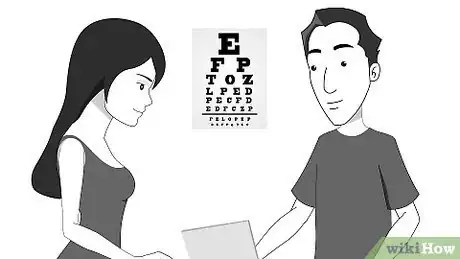

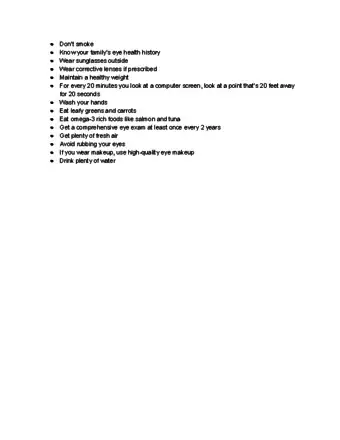





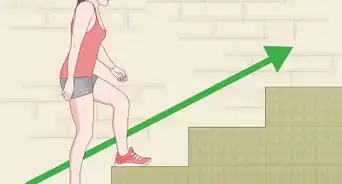

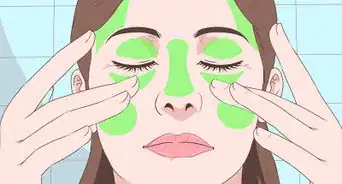
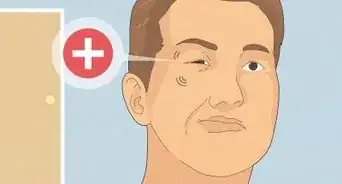

-Step-3-Version-2.webp)




















































Medical Disclaimer
The content of this article is not intended to be a substitute for professional medical advice, examination, diagnosis, or treatment. You should always contact your doctor or other qualified healthcare professional before starting, changing, or stopping any kind of health treatment.
Read More...